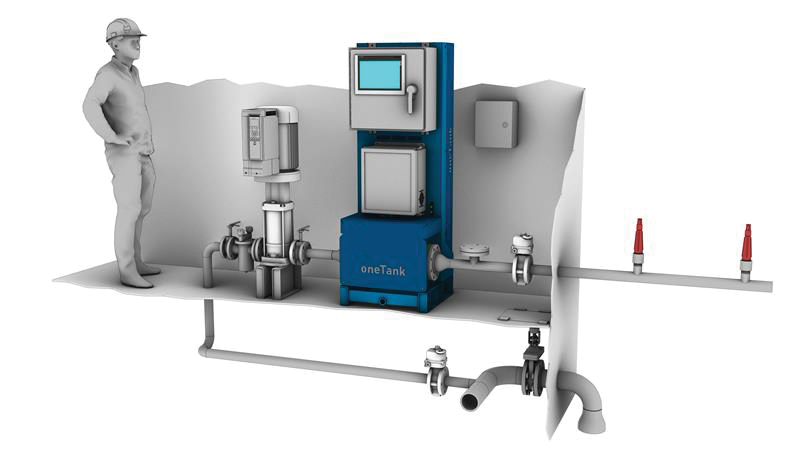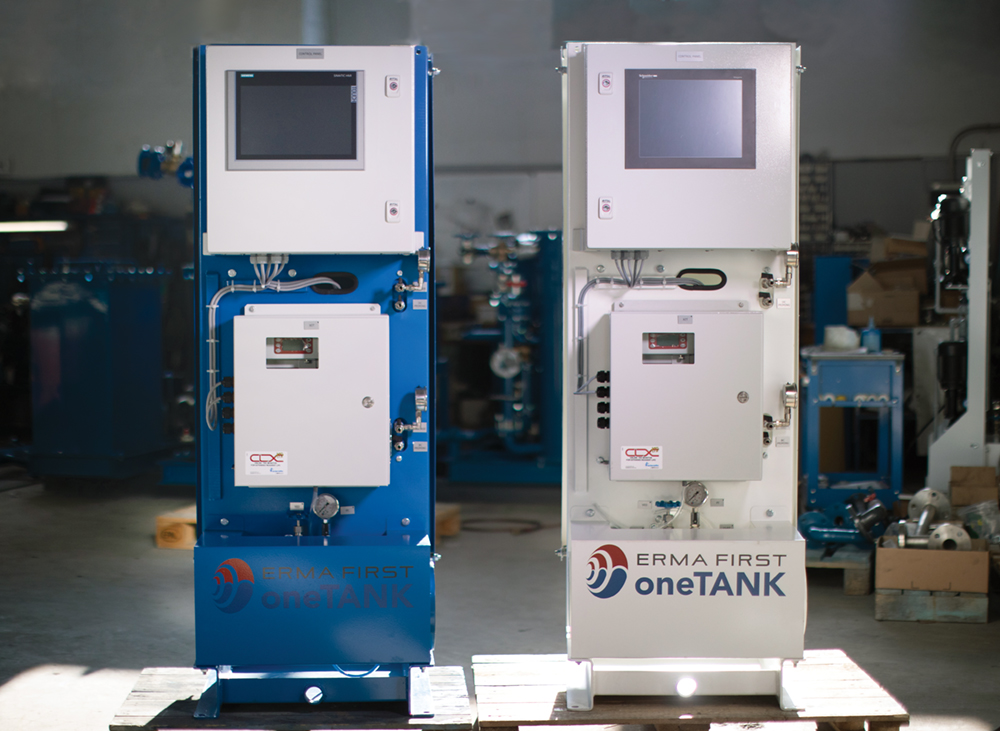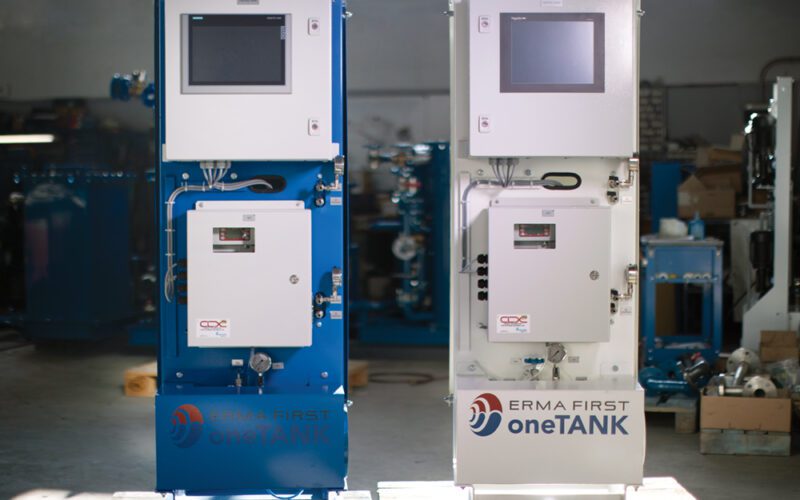
There are only two years left for the world’s international fleet to meet the International Maritime Organization’s September 2024 deadline for implementing ballast water treatment. Here’s a look at some of the ballast water technologies—onboard and otherwise—hitting the market to help vessels prepare for compliance.
Shore Support
Freedom Ballast has brought shore-based ballast water treatment to the U.S. Allowed to operate in Louisiana thanks to a newly-created permit with heightened environmental requirements, its services are available along the Louisiana Gulf Coast, from the head of the Mississippi River through Baton Rouge, the Sabine River and the Calcasieu River. A permit to operate in Texas is in process.
Freedom Ballast is a joint venture between the Denmark-based ballast water management company BAWAT, and its CEO William Burroughs, who left his job at Houston’s American Biotech Supply in April of 2021 to launch the company.
“Not all vessel owners will choose to install and operate ballast water treatment systems on board,” Boroughs said in a February 2022 news release. “Amongst those that do, the systems may not be in compliance as evidenced by a recent study showing as many as 30%-50% of onboard systems go out of compliance within six months.”
Still other vessels, Boroughs told Pacific Maritime, will turn to shore-based ballast water treatment when onboard systems malfunction.
Freedom Ballast offers its heat-only pasteurization process to ships large and small. For larger ships, Boroughs anticipates “having the equipment on a barge” in the Mississippi River, where it can meet anchored ships. Then vessels can “discharge your ballast to us, we’ll treat it as certified and dump it overboard and give you a certificate of compliance,” Boroughs said.
Smaller ships can be serviced in port.
“We just finished an offshore support vessel, de-ballasting in Bollinger Shipyard,” he said. “Three ships brought in a total of 3,500 cubic meters of unmanaged ballast water … so we hooked up to them and took their ballast water off and treated it. Now those ships were able to go into the dock empty, and they couldn’t get in to maintain the tanks unless they got rid of the water.”
Those interested in using the service can submit a letter of intent a couple of days before anchorage. Freedom Ballast also offers on-demand scheduling. Boroughs estimates the cost for a larger ship with about 10,000 to 15,000 cubic meters of ballast water will be $40,000 to $60,000 per servicing.

Improved Filtration
“Three’s a lot of press about how systems don’t work … and the reality is often that relates to the filters,” Mark Riggio, head of Filtersafe’s Marine Davison, said. Filtersafe is addressing this with a new, globally-available line of scanner arms, the NozzleX, for its Everclear cleaning system.
The arm can be installed by the crew in any of the thousands of ships already using the Everclear line.
“We just send them a new scanner, they can pull the old scanner arm out, put the new one in, and then immediately it gives them a higher cleaning efficiency,” up to “100% more efficient than the baseline model,” Riggio said.
The new filter gets within several micrometers of the screen, cleaning in a corkscrew revolution that can clear a filter in one revolution instead of two to four passes.
In 2020, Filtersafe put the line of NozzleX filters through independent testing at the Control Union Water Test Facility in the Netherlands with its 40 and 25 micrometer screens. The Standard, Turbo and SuperTurbo versions of the NozzleX all passed Control Safe’s Shanghai test (1,000 MG/L TSS), “which seeks to mimic the muddy, turbid waters of the popular Shanghai port,” according to Filtersafe’s website.
All of the cleaning nozzles also passed the Extreme TTS Concentrations test (>>1,000 MG/L TSS). “No manual mechanical cleaning was applied between tests because the filter fully recovered on its own to its original state,” according to Filtersafe’s white paper on the tests, when can be seen at https://filtersafe.net/wp-content/uploads/2021/09/Shanghai-Test-Results-Filtersafe-White-Paper.pdf.
This is an “increase in the efficiency of our filters, allowing it to operate in much dirtier water at a much higher throughput rate,” Riggio explained.
The nozzles are currently in operation on upwards of 200 vessels, all installed since the company began to market the product in 2020 and 2021. The scanner arm costs between $6,000 and $8,000, according to Riggio, and orders can be filled within a few days.
Small But Mighty
Filtersafe is also among the companies offering ballast water treatment systems with a reduced footprint. Its new Manta line, designed for UV systems, premiered in June at Posidonia and is expected to be fully launched at the SMM international trade fair for shipbuilding, machinery and marine technology this September.
The four Manta filters range from the Manta 33, a 642 mm wide, 682 mm long and 1,041 mm tall filter that can handle 90 m3 an hour, to the Manta 162, which clocks in at 804 mm by 792 mm by 1,475 mm and filters 500 m3 an hour.
oneTANK, a new product from Greek water treatment firm ERMA FIRST, “is the most compact and simple system worldwide,” according to Konstantinos Dimopoulos, the company’s international sales director. The chemical cleaning system is 604 mm wide, 559 mm long and 1,651 mm tall, weighs about 475 pounds, and requires 15 amps of onboard power.
“In general, oneTANK needs one-and-a-half hours for bleach injection, 24 hours of holding on time and an hour to neutralize the remaining chlorine prior to discharge overboard,” Dimopoulos explained. This is done in-tank via “a closed circulation loop during the vessel’s voyage.”
The system costs $65,000 and delivery typically takes two weeks, according to the company.
Launched this year, BIO-SEA’s new M range is also smaller than the company’s previous products. “We changed the design to improve, improve significantly the compactness,” BIO-SEA’s business director, Maxime Dedeurwaerder, commented. The system, which uses mechanical filtration and UV disinfection, has a lamp lifespan of 5,000 hours and can treat 190 to 2100m3 an hour.
Looking forward, Bio-SEA said that it aims to give its customers fleet-wide visibility into the status of their ballast water treatment systems.
“Tomorrow, we need to get our system remotely accessible,” Bio-UV’s technical director, Florian Cortez, commented. “We want to provide our customer a single interface cloud where you will be able to collect all data from different ships, these fleets, and they will be able to share to whoever is asking for its water quality.”

